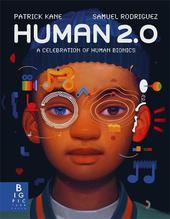
|
Human 2.0: A Celebration of Human Bionics
Hardback
Main Details
| Title |
Human 2.0: A Celebration of Human Bionics
|
| Authors and Contributors |
By (author) Patrick Kane
|
|
Illustrated by Sam Rodriguez
|
| Physical Properties |
| Format:Hardback | | Pages:64 | | Dimensions(mm): Height 280,Width 216 |
|
| ISBN/Barcode |
9781800781689
|
| Classifications | Dewey:610.28 |
|---|
| Audience | |
|---|
|
Publishing Details |
| Publisher |
Templar Publishing
|
| Imprint |
Big Picture Press
|
| NZ Release Date |
2 May 2023 |
| Publication Country |
United Kingdom
|
Description
Imagine being able to hear for the first time, or see in full-colour, or take your first steps on Earth. This incredible book celebrates the remarkable achievements made in medical engineering, and offers a glimpse of what the future might hold for humanity. Pioneering technological breakthroughs have truly changed lives. For some people, particularly those with disabilities, recent advances have crossed the realms of the purely imaginable, and reached a place of possibility. People with paraplegia can walk again, those who are hearing impaired can listen to even the faintest sounds, and some people with missing limbs can create beautiful works of art. This phenomenal book is a celebration of all that has been achieved so far, and a look at what might be possible in the near future. Is it inevitable that technology will surpass biology? From cochlear implants and pacemakers, to bionic arms and legs, this empowering book also features spotlights on pioneers including Paralympians Richard Whitehead and Blake Leeper, and the world's first 'cyborg' Neil Harbisson.
Author Biography
Patrick Kane (Author) Patrick Kane is a motivational speaker, campaigner, Ambassador to The UK Sepsis Trust and Ambassador to Touch Bionics. In 2010, he was fitted with a revolutionary bionic arm - the I-Limb Pulse, after contracting septicaemia as a baby. He has since gone on to carry the Olympic torch through Trafalgar Square as part of the London 2012 Olympic Games ceremony, spoke at TEDxTeen in 2014 and appeared at WIRED Next Generation in 2015.
|